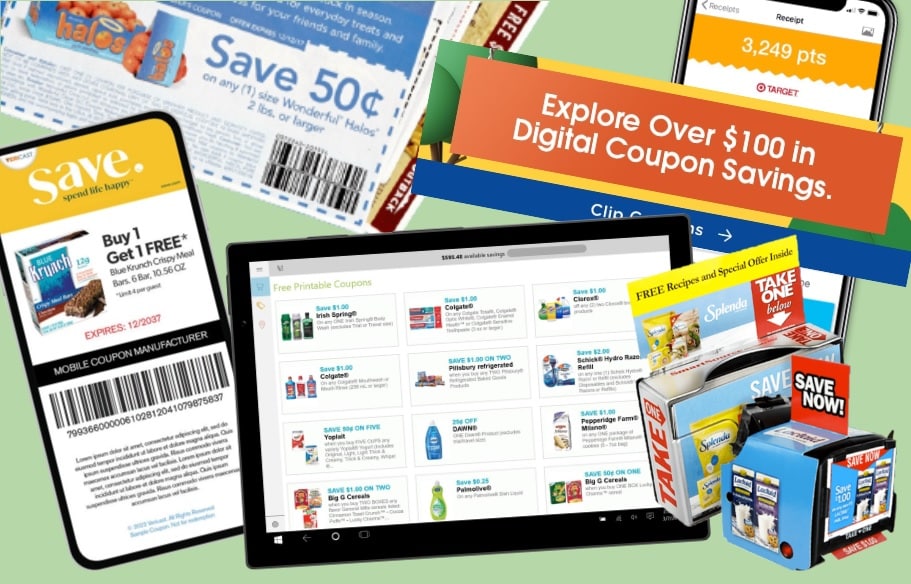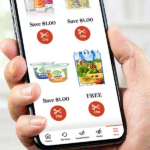
Grocery inflation remains stubbornly high. Prices are rising, promotions are lackluster, and frustrated shoppers are buying fewer items, switching to store brands, or just doing without in a desperate attempt to save money.
So when are we going to start seeing more coupons again? Ever??
Not yet, according to the latest figures.
Vivvix, a spinoff of Kantar, has taken over the parent company’s business of compiling coupon facts and figures this year. And what it found in crunching the year-end numbers from 2022 is not good, for anyone hoping coupons are poised to make a comeback.
Vivvix’s Integrated Print and Digital Promotion 2022 Trends and Insights report found that the total number of print and digital coupons distributed last year was 136 billion. That’s the fewest total number of coupons available in a single year in four decades. Not only that, but last year’s total was down an alarming 19.7% from the previous year. In percentage terms, according to Coupons in the News‘ calculations, that marks the steepest one-year decline ever recorded, by far, even more severe than the 15.3% decline experienced in 2020, when the coronavirus pandemic sent coupon distribution figures over a cliff.
As a result, the total amount of available coupon savings last year was $369.7 billion – down from $425.4 billion the year before. This report covers only coupon distribution and not redemption, though it’s safe to assume that fewer available coupons likely meant far fewer coupons were used last year as well.
As has been the case in recent years, the steady decline in the total number of paper coupons accounted for most of the overall decline. But digital wasn’t looking too hot, either.
First, to the number of coupons printed in the Sunday inserts. They decreased 21%, to 125 billion last year. The sharpest decline came in the number of coupons for food, which was down 40% from the previous year. As a result, the mix of food versus nonfood paper coupons is tilted toward nonfood more than ever before. In 2021, a then-record high 84% of paper coupons distributed were for nonfood items. Last year set a new all-time high of 87.9% – meaning nearly nine out of ten coupons in your Sunday inserts were for things like toiletries and household supplies as opposed to anything you can actually feed your family. Health care and personal care items alone accounted for three-quarters of all paper coupons last year.
The value of paper coupons for food was nothing to write home about, either. Even as food prices soared last year, food coupons’ face values remained flat, at an average of $1.54. Nonfood paper coupon values, in contrast, increased 17 cents to an average of $2.95.
As for digital coupons, pandemic-plagued 2020 was an outlier for the format, which uncharacteristically declined 8% back then before returning to steady growth the next year. But with 10.7 billion digital coupons available last year, the total number of digital coupons was flat year-over-year – no decline, but no growth, either.
Fans of food coupons are also more likely to find what they want in digital form. 56% of digital coupons last year were for food items, which is a far greater percentage than paper coupons, but down from 65% the previous year. The average value for digital food coupons was $1.54, the same as paper food coupons, though the average digital nonfood value decreased 14 cents to $2.21, far less than the average paper nonfood coupon.
And digital means more than just load-to-card coupons. Digital rebates, whether offered directly by manufacturers, or via cash-back apps like Ibotta or Checkout 51, increased last year after declining the year before. Vivvix counted up 1.2 billion available digital rebates in 2022. And that’s where the food offers seem to be migrating, as 63% of digital rebates were for edible items.
Despite a lackluster year for digital in terms of growth, if there’s any question about digital’s popularity relative to printed coupons, check out these stats: 165 unique manufacturers printed offers in Sunday coupon inserts last year. 2,838 unique manufacturers offered digital coupons – more than 17 times as many. And of the nearly 2,000 new products introduced last year, 95% that offered coupons to incentivize purchases did so digitally first.
Whether you prefer paper or digital, it’s hard not to be disappointed by the overall numbers. It’s been nearly a decade since the last time coupon distribution actually increased year-over-year, with the most significant increase occurring in 2009 and 2010, in the aftermath of the Great Recession.
When times are tough, couponers start clipping. But they can’t, if there’s nothing to clip. With prices on the rise and shoppers feeling pinched, these are precisely the conditions that historically result in manufacturers offering more coupons, to make sure price-sensitive shoppers don’t switch to cheaper brands and never come back. But that’s not happening this time. And Vivvix is warning manufacturers of consumer packaged goods that they could be making a mistake.
“As prices increase, shopper baskets shrink, and CPG brands run the risk of being dropped along the path to purchase,” Vivvix cautions. “Strategic promotion planning can add the value necessary to ensure their products make it to the register.” Vivvix also advises brands to be creative, in ensuring that consumers are seeing their offers instead of others’. “Keeping a close eye on the competition to counter up-and-coming tactics is essential to making the cut with coupon-savvy shoppers.”
Every year since 2020, when the pandemic hit and economic uncertainty took hold, shoppers and retail observers alike have figured that coupons must be poised for a comeback. So far, though, that hasn’t happened. So could 2023 be the year it finally does? Coupon distribution can only go so low before it finally hits bottom. And it appears we may not have found that bottom just yet.










